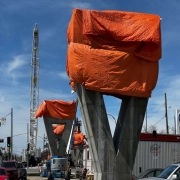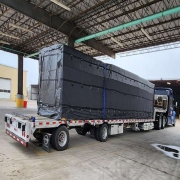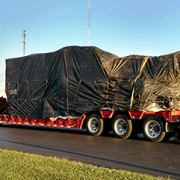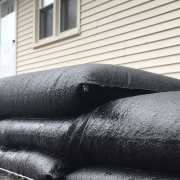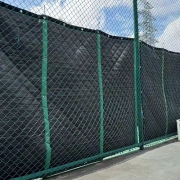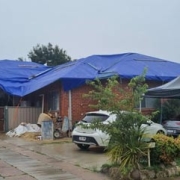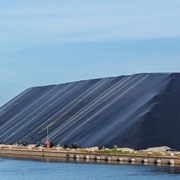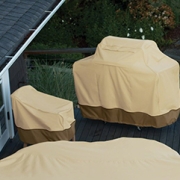Learn the difference between insulated tarps and insulated blankets. Compare materials, insulation performance, and applications for construction and industrial use.
Both insulated tarps and insulated blankets are designed to retain heat, protect materials, and prevent freezing during cold weather.
While they look similar, their structure, insulation type, and application vary significantly — and choosing the right one can directly affect project quality, safety, and efficiency.
Let’s break down the key differences between insulated tarps and insulated blankets, and help you decide which one best fits your needs.
✅ Structure & Material Composition
| Feature | Insulated Tarps | Insulated Blankets |
|---|---|---|
| Outer Layer | PVC or PE waterproof coating | Heavy-duty polyethylene or fabric cover |
| Insulation Core | Poly foam / bubble / fiber insulation | Fiberglass or high-density foam |
| Construction | Flexible tarp-style sheet with welded edges | Multi-layer quilted design (stitched or laminated) |
| Waterproofing | Fully waterproof | Water-resistant (some are breathable) |
Summary:
- Insulated Tarps are designed like a tarp — flexible, lightweight, and waterproof.
- Insulated Blankets are thicker, more rigid, and made for direct heat retention or curing.
✅ Primary Function
| Function | Insulated Tarps | Insulated Blankets |
|---|---|---|
| Purpose | General thermal protection, covering, and insulation | Focused heat retention, especially in curing or freezing conditions |
| Main Use | Covering materials, containers, or equipment | Maintaining constant temperature for curing concrete or thawing |
| Portability | Lightweight and foldable | Heavier and bulkier |
| Flexibility | High — can wrap around objects easily | Lower — designed for flat surfaces |
Summary:
- Tarps = versatile protection.
- Blankets = specialized thermal insulation.
✅Applications
| Use Case | Best Product | Reason |
|---|---|---|
| Concrete curing in cold weather | Insulated Blanket | Provides superior thermal retention directly on concrete |
| Equipment or container covering | Insulated Tarp | Waterproof and flexible for various shapes |
| Outdoor material protection | Insulated Tarp | Easier to install, remove, and reuse |
| Ground frost prevention | Insulated Blanket | Heavier design keeps heat trapped near ground |
| Temporary heat containment (tent, enclosure) | Insulated Tarp | Lighter and easy to suspend or attach |
✅ Insulation Performance
| Feature | Insulated Tarps | Insulated Blankets |
|---|---|---|
| R-Value (Thermal Resistance) | Moderate (2–4 depending on thickness) | Higher (4–7 depending on material) |
| Heat Retention Duration | 6–12 hours typical | 12–24 hours or more |
| Weight | 450–800 gsm | 1200–1800 gsm |
| Durability | 3–5 years (reusable) | 2–4 years (may degrade with direct concrete contact) |
Summary:
- Insulated blankets trap heat longer but are heavier.
- Insulated tarps balance insulation with flexibility and reusability.
✅ Installation & Handling
| Factor | Insulated Tarps | Insulated Blankets |
|---|---|---|
| Ease of Use | Very easy; lightweight | Requires more handling |
| Installation Method | Tied, weighted, or clipped | Laid flat over curing area |
| Maintenance | Simple cleaning and folding | Needs drying after use |
| Reuse Rate | High | Moderate (fiberglass can wear out) |
✅ Cost Comparison
| Category | Insulated Tarps | Insulated Blankets |
|---|---|---|
| Initial Cost | Moderate | Higher |
| Reusable Life | Longer | Shorter in heavy-duty use |
| Overall ROI | Excellent | Good for project-specific use |
| Best For | Contractors seeking long-term reusable covers | Construction sites requiring concrete curing control |
✅ Which One Should You Choose?
| Application | Best Choice | Reason |
|---|---|---|
| General outdoor insulation | Insulated Tarp | Lightweight, waterproof, and reusable |
| Concrete curing and frost prevention | Insulated Blanket | Higher R-value and direct-contact design |
| Protecting containers, machinery, or pallets | Insulated Tarp | Easy to wrap and tie down |
| Short-term heat curing projects | Insulated Blanket | Thicker and heat-trapping |
| All-weather multi-use cover | Insulated Tarp | Ideal for storage and transport protection |
Conclusion
Insulated tarps are versatile, waterproof covers ideal for general temperature protection, storage, and transport.
Insulated blankets are specialized tools for concrete curing, frost prevention, and high heat retention.
If you need multi-purpose thermal protection, choose PVC insulated tarps for durability, reusability, and easy installation.
If your focus is precise temperature control during construction or curing, go for insulated blankets.

